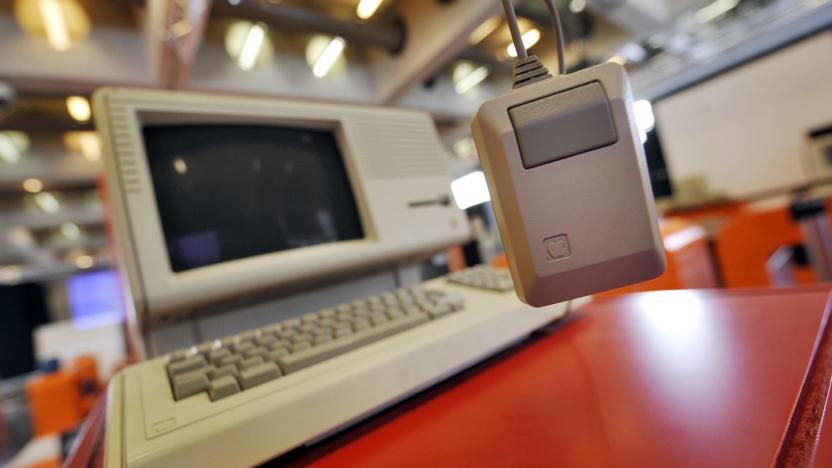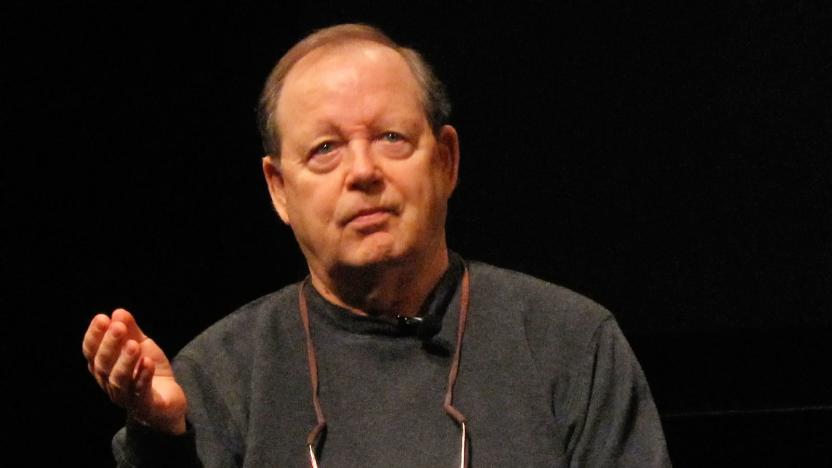xeroxparc
Latest

Apple's original graphical OS will be available for free in 2018
If you've ever wanted to try Apple's graphical interface on the Lisa, the computer that preceded the Mac, you've been relegated to either using an emulator or (if you're lucky) tracking down one of the rare, expensive machines. Thankfully, it's about to get much easier. The Computer History Museum's Al Kossow has revealed that the source code for the Lisa's operating system and programs will be published for free sometime in 2018. And this isn't some unofficial effort -- Apple is reviewing the code itself.

Internet and computing pioneer Robert Taylor dies
The technology world just lost one of its most prominent innovators. Robert Taylor, best known as the mastermind of ARPAnet (the internet's precursor), has died at 85. As the director of the US military's Advanced Research Projects Agency from 1965 until 1970, he helped pioneer the concept behind shared networks -- he was frustrated with constantly switching terminals and wanted to access multiple networks from one system. While a lot of the credit goes to his team for implementing ARPAnet, he both pushed hard for the project and wrote a legendary 1968 essay that foretold the internet's future: a vast, decentralized grid of connected devices that would reshape communication at just about every level.

Meet your desktop's ancestors: AT&T exhumes footage of the Bell Blit (video)
AT&T's video archives are rich seams of juicy historical tidbits, and today's offering is a fine example. It's sharing footage of the Bell Blit, a graphic interface that Bell Labs developed after being inspired by the Xerox Alto. Originally named the Jerq, it was created by Rob Pike and Bart Locanthi to have the same usability as the Alto, but with "the processing power of a 1981 computer." Watch, as the narrator marvels at being able to use multiple windows at once, playing Asteroids while his debugging software runs in the background on that futuristic green-and-black display. The next time we get annoyed that Crysis isn't running as fast as you'd like it to, just remember how bad the geeks of yesteryear had it.

ThinFilm and PARC demo printable, organic CMOS circuit, inch us closer to an 'internet of things'
ThinFilm and the legendary PARC (of mouse and GUI fame) announced they have produced a working prototype of a printable circuit that incorporated organic, rewritable memory and transistors. The resulting integrated circuits are essentially CMOS "chips" that can be printed on large rolls at extremely low cost. The most obvious application of the technology is in NFC chips, but the small price and size could find the printable circuits turning up as everything from price tags to freshness sensors on food packaging. Sure, the idea of an "internet of things" sounds a bit cheesy, but there's no denying the allure of a world where practically everything is "smart." Check out the full PR after the break for a few more details.

Computing pioneer Chuck Thacker wins Turing Award
Chuck Thacker may not be quite the same household name as some other computing pioneers, but it's pretty hard to overstate the influence he's had on the industry, a feat for which he's now be honored with the A.M. Turing Award -- widely considered to be the "Nobel prize of computing." While Thacker is now a "Technical Fellow" at Microsoft, he first made a name for himself at Xerox PARC, where he not only helped design and realize the very first modern computer, the Alto, but co-invented Ethernet, and contributed to a range of other projects that have had a lasting impact on computing to this day. Later, while at Microsoft Reseach, Thacker oversaw the design of the very first Tablet PC prototypes, and he continues to lead up a computer-architecture group at the company and be involved with various research efforts. Of course, that's only scratching the surface -- hit up the links below for a more complete background of the man's work, and head on past the break for a short video put together for the occasion by Microsoft.

Xerox shows off "erasable paper," hopes to make it available next year
The folks at Xerox has been working on their "erasable paper" idea for some time now, but it looks like they've been making some real progress as of late, with them now even going so far as to say that they hope to have an actual product available sometime next year. The paper itself, however, appears to still use the same basic technology they've been working on all along -- namely, a coating of photosensitive chemicals that turn white when hit by ultraviolet light or react to product text when scanned specific wavelength of light. The text can then be erased on command by feeding it through a special printer, or left to disappear on its own over a period of 24 hours. On the downside, the paper is apparently useless if it's been folded or wrinkled, or written on with a pen. No word on an expected price for the paper or printer just yet, unfortunately, but Xerox seems to be betting that the savings in paper (and consequential environmental benefits) will be enough to offset whatever premium they'll likely cost.[Via The Inquirer, image courtesy of Xerox / Greig Reekie]

Microsoft to start its own chip design lab for new Xbox
Ah, Wintel. The mere convergence of the words "Windows" and "Intel" harkens back to a simpler time (call it the 1980s and 1990s), when Microsoft and Intel were literally joined at the hip. Microsoft provided the software, and Intel brought the brains. Today in the aught decade, everything's all whacked -- Apple has partnered with Intel, dumping IBM. Meanwhile, Microsoft is in the video game business, and now powers its Xbox with IBM chips. Well, get ready for yet another change in the who's-in-bed-with-whom story: Microsoft is leaving IBM. Who's the lucky bride? Itself! Yes, that's right, according to a report in yesterday's Gray Lady, Microsoft will be starting its own chip design division, with the ultra-creative name: "The Computer Architecture Group," and will be split between Redmond, Washington and Mountain View, California. The venerable NYT adds that Microsoft will use the lab to beef up chips in the next-generation Xbox (the Xbox 720?), and will be headed by Charles P. Thacker (pictured here working on the CAG gang sign). He's formerly of the legendary Xerox Palo Alto Research Center, where he helped work on the original Alto and the invention of Ethernet. All that aside, we're kinda concerned that IBM doesn't get too depressed over this development, and hope that Big Blue will at least get the kids, the car, and the house.[Via TG Daily]



